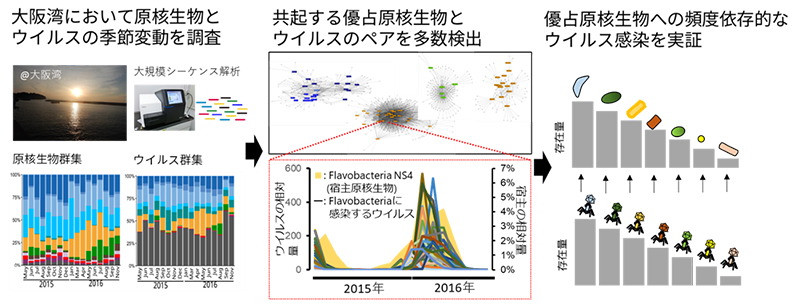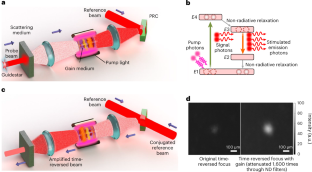- 生物学とテクノロジーの境界は曖昧になりつつあります。スウェーデンのリンポーピン大学、ルンド大学、イェーテボリ大学の研究者たちは、生体分子をトリガーとして、生体組織内に電極を成長させることに成功した。 The boundaries between biology and technology are becoming blurred. Researchers at Linköping, Lund, and Gothenburg universities in Sweden have successfully grown electrodes in living tissue using the body’s molecules as triggers. The result, published in the journal Science, paves the way for the formation of fully integrated electronic circuits in living organisms.
生物学とテクノロジーの境界は曖昧になりつつあります。スウェーデンのリンポーピン大学、ルンド大学、イェーテボリ大学の研究者たちは、生体分子をトリガーとして、生体組織内に電極を成長させることに成功した。 The boundaries between biology and technology are becoming blurred. Researchers at Linköping, Lund, and Gothenburg universities in Sweden have successfully grown electrodes in living tissue using the body’s molecules as triggers. The result, published in the journal Science, paves the way for the formation of fully integrated electronic circuits in living organisms.
2023-02-24 スウェーデン・リンショーピング大学
With the injectable gel the researchers were able to grow electrodes in living tissue. Here it is tested on a microfabricated circuit. Thor Balkhed
◆導電性材料:このような生物学とテクノロジーのギャップを埋めるため、研究者たちは、生体組織内に基板を使わない柔らかい電子伝導性材料を作成する方法を開発した。酵素を「組み立て分子」として含むゲルを注入することで、ゼブラフィッシュや薬用ヒルの組織内に電極を成長させることに成功した。
◆”体内物質 “と接触することでゲルの構造が変化し、注入前にはない電気を通すようになる。組織によっては、ゲルの組成を調整して電気的プロセスを進行させることもできます」と、LOEとルンド大学の研究者でこの研究の主執筆者の一人であるXenofon Strakosasは言う。
◆電極を形成するきっかけは、体内の内因性分子だけで十分です。これまでの実験で必要だった遺伝子組み換えや、光や電気エネルギーなどの外部シグナルは必要ない。これに成功したのは、スウェーデンの研究者が世界で初めてである。
◆彼らの研究は、バイオエレクトロニクスの新しいパラダイムへの道を開くものである。これまでは、体内の電子プロセスを開始するために物理的な物体を埋め込む必要がありましたが、今後は粘性のあるゲルを注入するだけで十分となるでしょう。
◆研究者らはさらに、この方法により、電子伝導性材料を特定の生体部分構造に狙い撃ちし、それによって神経刺激に適した界面を作り出すことができることを明らかにしている。長期的には、生体内に完全に集積化された電子回路を作製することが可能になるかもしれない。
◆ルンド大学で行われた実験では、ゼブラフィッシュの脳、心臓、尾びれ、薬用ヒルの神経組織周辺に電極を形成することに成功した。注入されたゲルによって動物が傷つけられることはなく、その他にも電極形成の影響を受けることはなかったという。これらの試験における多くの課題のひとつは、動物の免疫系を考慮することでした。
◆この研究のイニシアチブをとったのは、2015年にリンショーピン大学の研究者が開発した電子バラの記事を読んだロジャー・オルソン教授です。ひとつの研究課題であり、植物と動物の重要な違いは、細胞構造の違いでした。植物は電極を形成できる硬い細胞壁を持っているのに対し、動物の細胞は柔らかい塊のようなものです。このような環境で電極を形成するために、十分な構造と適切な物質の組み合わせを持つゲルを作ることは、何年もかけて解決された課題でした。
◆論文 は、サイエンス 2023年 2023年2月23日オンライン公開 DOI: 10.1126/science.adc9998
<関連情報>
- https://liu.se/en/news-item/elektroder-odlas-i-hjarnan-kan-pa-sikt-bota-nervsjukdomar-
- https://www.science.org/doi/10.1126/science.adc9998
- https://www.science.org/doi/10.1126/science.adg4761
メタボライトによる基板不要の有機バイオエレクトロニクスのin vivo作製 Metabolite-induced in vivo fabrication of substrate-free organic bioelectronics
Xenofon Strakosas,Hanne Biesmans,Tobias Abrahamsson,Karin Hellman,Malin Silverå Ejneby ,Mary J. Donahue,Peter Ekström,Fredrik Ek,Marios Savvakis,Martin Hjort,David Bliman ,Mathieu Linares,Caroline Lindholm,Eleni Stavrinidou ,Jennifer Y. Gerasimov,Daniel T. Simon,Roger Olsson,Magnus Berggren
Science Published:23 Feb 2023
DOI: 10.1126/science.adc9998
A recipe for in situ bioelectronic materials
There are challenges in making materials that are soft enough to be interfaced with living tissue but firm enough to be inserted into the body. Strakosas et al. bypassed this challenge by developing a route to the polymer in vivo (see the Perspective by Inal). They introduced a complex precursor system including an oxidase to generate hydrogen peroxide in situ, a peroxidase to catalyze oxidative polymerization, a water-soluble conjugated monomer, a polyelectrolyte with counterions for covalent cross linking, and a surfactant for stabilization. With this cocktail, the authors were able to induce polymerization and subsequent gelation in different tissue environments. Demonstrations include the ex situ fabrication of this conducting gel in zebrafish (brain, fin, and heart), in food samples (beef, pork, chicken, and tofu), and a proof of concept of in vivo stimulation of a leech nerve. —MSL
Abstract
Interfacing electronics with neural tissue is crucial for understanding complex biological functions, but conventional bioelectronics consist of rigid electrodes fundamentally incompatible with living systems. The difference between static solid-state electronics and dynamic biological matter makes seamless integration of the two challenging. To address this incompatibility, we developed a method to dynamically create soft substrate-free conducting materials within the biological environment. We demonstrate in vivo electrode formation in zebrafish and leech models, using endogenous metabolites to trigger enzymatic polymerization of organic precursors within an injectable gel, thereby forming conducting polymer gels with long-range conductivity. This approach can be used to target specific biological substructures and is suitable for nerve stimulation, paving the way for fully integrated, in vivo–fabricated electronics within the nervous system.


